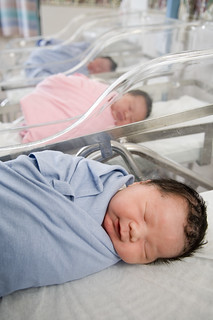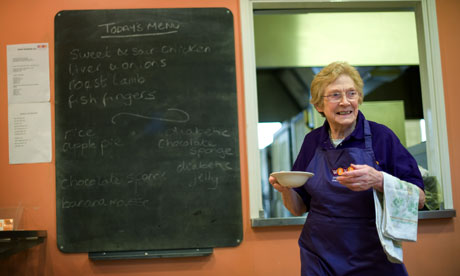30 Incorrectly Used Words That Can Make You Look Horrible
Easy to get wrong. And easy to get right
Adverse and averse
Adverse means harmful or unfavorable; “Adverse market conditions caused the IPO to be poorly subscribed.” Averse means dislike or opposition; “I was averse to paying $18 a share for a company that generates no revenue.”
But you can feel free to have an aversion to adverse conditions.
-
Affect and effect
Verbs first. Affect means to influence; “Impatient investors affected our roll-out date.” Effect means to accomplish something; “The board effected a sweeping policy change.” How you use effect or affect can be tricky. For example, a board can affect changes by influencing them, or can effect changes by implementing them. Use effect if you’re making it happen, and affect if you’re having an impact on something someone else is trying to make happen.
As for nouns, effect is almost always correct; “Once he was fired he was given 20 minutes to gather his personal effects.” Affect refers to emotional states so unless you’re a psychologist, you’re probably not using it.
-
Compliment and complement
Compliment is to say something nice. Complement
is to add to, enhance, improve, complete or bring close to perfection.
So, I can compliment your staff and their service, but if you have no
current openings, you have a full complement of staff. And your new app
may complement your website.
For which I may decide to compliment you.
-
-
Criteria and criterion
“We made the decision based on one overriding criteria,” sounds pretty impressive but is wrong.
Remember: one criterion, two or more criteria. Although you could always use reason or factors and not worry about getting it wrong.
-
-
Discreet and discrete
Discreet
means careful, cautious, showing good judgment; “We made discreet
inquiries to determine whether the founder was interested in selling her
company.”
Discrete
means individual, separate or distinct; “We analyzed data from a number
of discrete market segments to determine overall pricing levels.” And
if you get confused, remember you don’t use “discreetion” to work
through sensitive issues; you exercise discretion.
-
-
Elicit and illicit
Elicit means to draw out or coax. Think of elicit
as the mildest form of extract or, even worse, extort. So if one lucky
survey respondent will win a trip to the Bahamas, the prize is designed
to elicit responses.
Illicit means illegal or unlawful. I suppose you could “illicit” a response at gunpoint … but best not.
-
-
Farther and further
Farther involves a physical distance; “Florida is farther from New York than Tennessee.” Further
involves a figurative distance; “We can take our business plan no
further.” So, as we say in the South, “I don’t trust you any farther
than I can throw you.” Or, “I ain’t gonna trust you no further.”
(Seriously. I’ve uttered both of those sentences. More than once.)
-
-
Imply and infer
The speaker or writer implies. The listener or reader infers. Imply means to suggest, while infer
means to deduce (whether correctly or not). So, I might imply you’re
going to receive a raise. You might infer that a pay increase is
imminent. (But not eminent, unless the raise will be prominent and distinguished.)
-
-
Insure and ensure
This one’s easy. Insure refers to insurance. Ensure
means to make sure. So if you promise an order will ship on time,
ensure it actually happens. Unless, of course, you plan to arrange for compensation if the package is damaged or lost — then feel free to insure away.
-
-
Number and amount
I goof these up all the time. Use number when you can count what you refer to; “The number of subscribers who opted out increased last month.” Amount refers to a quantity of something you can’t count; “The amount of alcohol consumed at our last company picnic was staggering.”
Of course, it can still be confusing: “I can’t
believe the number of beers I drank,” is correct, but so is, “I can’t
believe the amount of beer I drank.” The difference is I can count
beers, but beer, especially if I was way too drunk to keep track, is an
uncountable total — so amount is the correct usage.
-
-
Precede and proceed
Precede means to come before. Proceed
means to begin or continue. Where it gets confusing is when an “ing”
comes into play. “The proceeding announcement was brought to you by …”
sounds fine, but preceding is correct since the announcement came before.
If it helps, think precedence: anything that takes precedence is more important and therefore comes first.
-
-
Principal and principle
A principle is a fundamental; “We’ve created a culture where we all share certain principles.” Principal means primary or of first importance; “Our startup’s principal is located in NYC.” (Sometimes you’ll also see the plural, principals, used to refer to executives or (relatively) co-equals at the top of a particular food chain.)
Principal can also refer to the most important item in a particular set; “Our principal account makes up 60% of our gross revenues.”
Principal
can also refer to money, normally the original sum that was borrowed,
but can be extended to refer to the amount you owe — hence principal and
interest.
If you’re referring to laws, rules, guidelines, ethics, etc., use principle. If you’re referring to the CEO or the president (or the individual in charge of the high school), use principal.
-
And now for those dreaded apostrophes:
-
And now for those dreaded apostrophes:
It’s and its
It’s is the contraction of it is. That means it’s
doesn’t own anything. If your dog is neutered (that way we make the
dog, however much against his will, gender-neutral) you don’t say, “It’s
collar is blue.” You say, “Its collar is blue.” Here’s an easy test to
apply: Whenever you use an apostrophe, un-contract the word to see how
it sounds. In this case, turn it’s into it is. “It’s sunny,” becomes, “It is sunny.” Sounds good to me.
-
-
They’re and their
Same with these; they’re is the contraction for they are. Again, the apostrophe doesn’t own anything. We’re going to their house, and I sure hope they’re home.
-
-
Who’s and whose
“Whose password hasn’t been changed in six months?” is correct. “Who is [the un-contracted version of who's] password hasn’t been changed in six months?” sounds silly.
-
-
You’re and your
One more. You’re is the contraction for you are. Your means you own it; the apostrophe in you’re doesn’t own anything. For a long time a local nonprofit had a huge sign that said “You’re Community Place.”
Hmm. “You Are Community Place”?
Probably not.





